Peter Gric was born in 1968 in Brno (Czechoslovak Socialist Republic) and emigrated to Austria in 1980. From 1988 to 1993 he studied under professor Arik Brauer at the Academy of Fine Arts Vienna.
He currently lives and works in Vienna with his family.
Peter Gric is best known for his mysterious abandoned futuristic architectural landscapes. He studied under professor Arik Brauer at the Academy of Fine Arts Vienna, who was one of the original members of the Vienna School of Fantastic Realism. Peter has come to represent the next generation of artists influenced from this movement.
Peter has been exhibited alongside other notable artists, such as H R Giger, and is a member of the Labyrinthe group. He has illustrated numerous book covers, predominantly for sci-fi or fantasy genres. Being of a younger generation of artists, he has not shied from digital technology and also works in 3D modelling. He often uses 3D techniques to conceptualize some of his more complex works before committing to paint.
Official website of Peter Gric: http://www.gric.at/


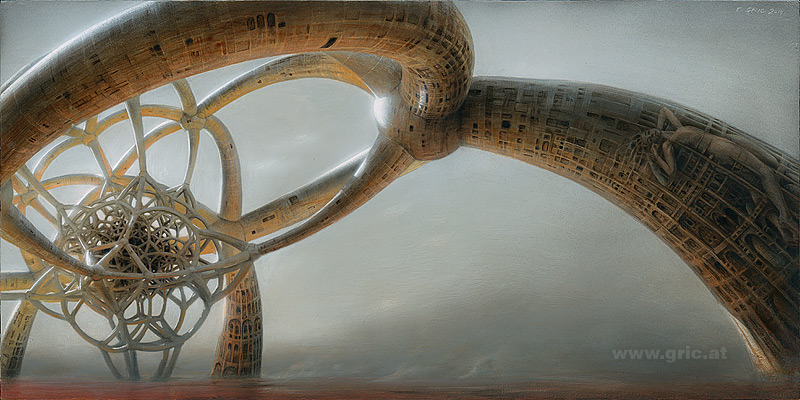
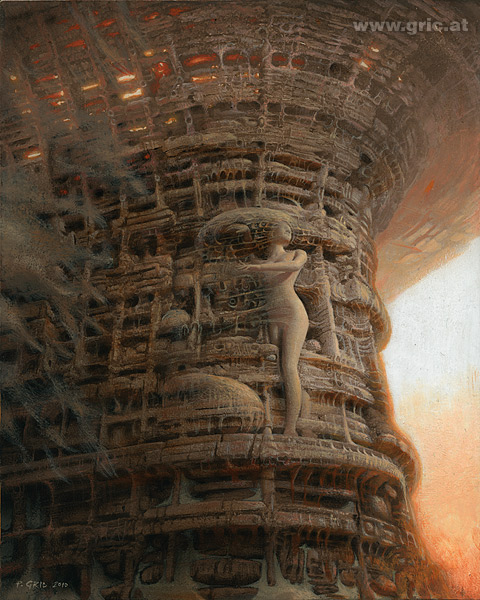
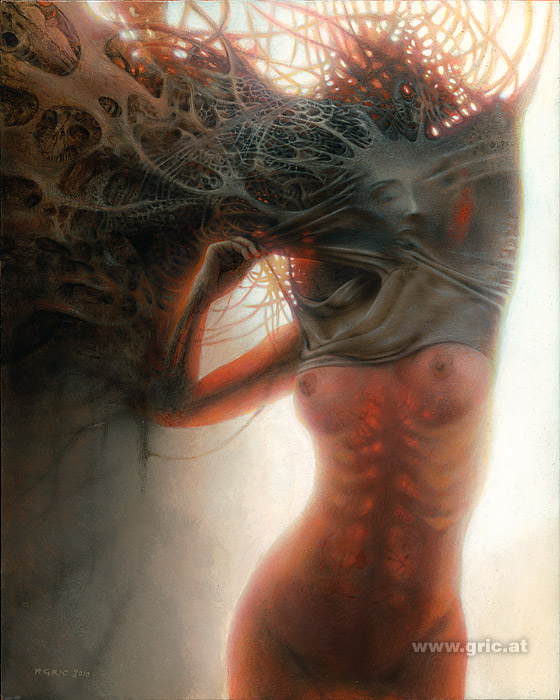
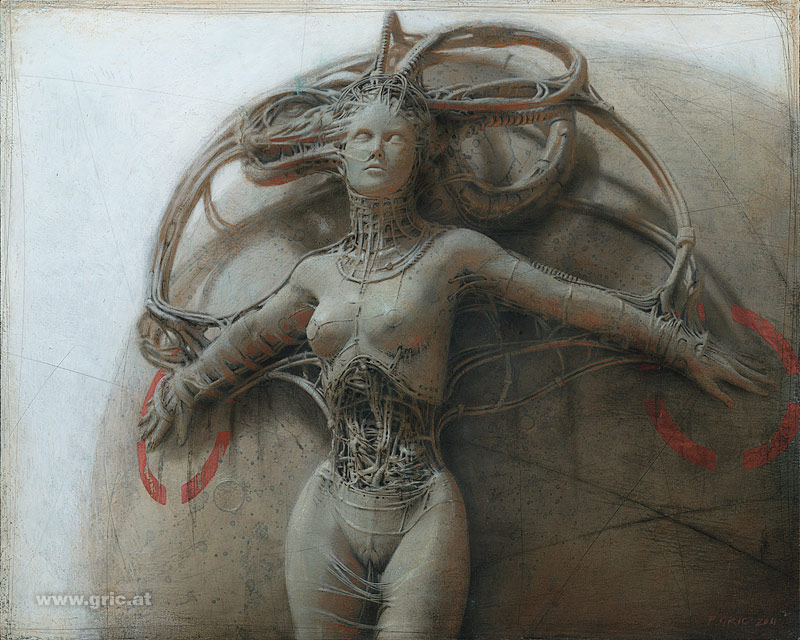

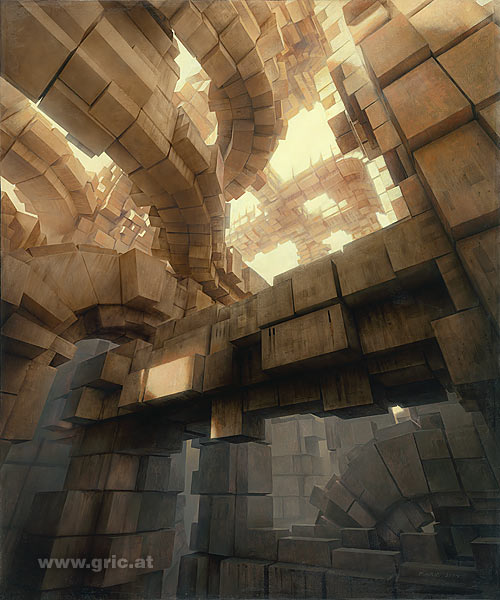
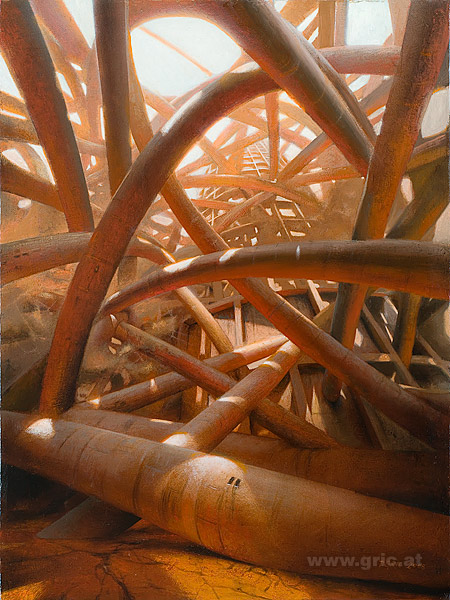
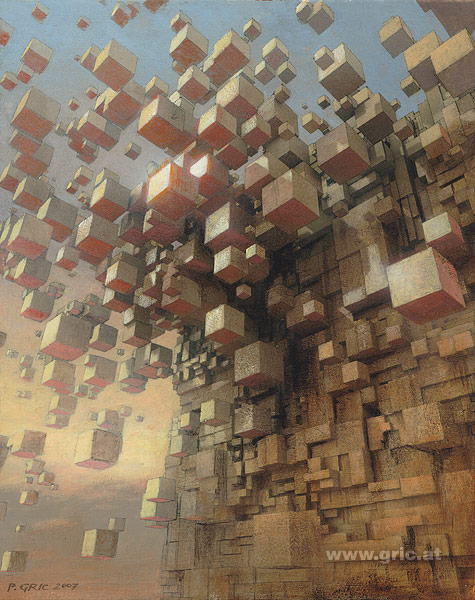

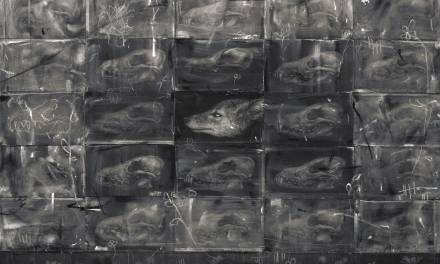
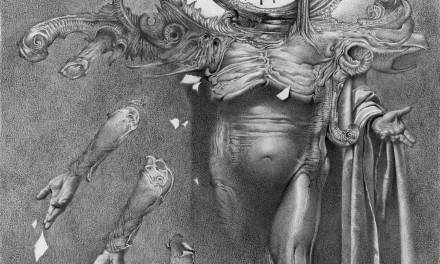
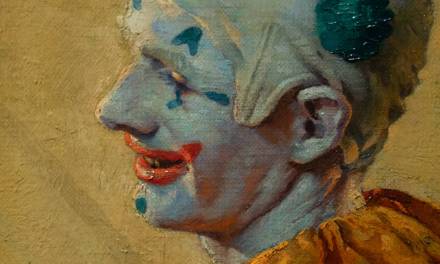
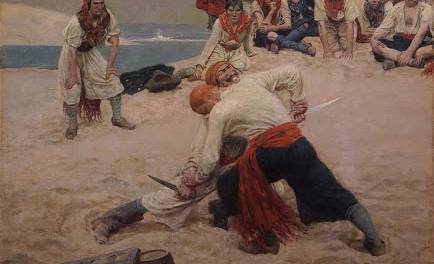
Beautiful work, but they seem to come from two different minds.
The lower images- the strictly geometric ones- seem incredibly optimistic. The depth, the warmth of the light, and even the simplicity of the shapes are uplifting. The movement and balance of light captured give a sense of life. Very optimistic.
Yet the images in the upper half are bleak. Nihilistic. The lack of depth (even in the first image), and the grotesque sexualization of the women portrayed leave an overwhelming negative impression. Even the strong “warm” light offered in these images is not enough to wipe away the distortion of humanity portrayed.
But, all images are beautifully rendered.
Which leads me to ask… Why is it that so much fantasy/sci-fi art is so bleak? Again, beautifully executed, but dark, and foreboding. Why?
I could be wrong, but that's my impression. Is over-sexualizing, dehumanizing, and brooding easier to capture? Easier to relate in images? Does pessimism sell better than optimism? Is it more fashionable? (Actually, yes, I think it is.)
It's just a question, and again I could be wrong, but that's kind of what I am seeing in a lot of work in this area.
I'm interested in your comments, Muddy Folk.
Thanks.
…Steve.
@ Steve:
That's a really insightful question.
As for the difference in Gric's work, the lower images are much older, so perhaps you -are- picking up on a shift in his intent. Personally, I view them as more optimistic only in that they appear to portray sunny days, and thusly appear happier. I don't find the figurative work Nihilistic, rather I think he's trying to imply a homogeny between human and environment.
Regarding bleak futures… I think it's a human condition. We see our own faults, and can only assume that society would have the same. Very few people envision the future as Utopia. Even when an artist -does- depict it as such, there is usually some underlying corruption to it (think 'Logan's Run', or 'Gattaca', or ton of other great SF movies). Is it because we honestly think we are incapable of selflessness? Perhaps. More likely it's an artistic choice. Utopia is a great goal, but it's emotionally bland. Pure happiness creates a rather monotone picture, and stirs very little emotion within. Passion, Lust, Fear, Anger… all of these engage a viewer so much more, and thus are -easier- tools for an artist to use when creating an emotional image. Look at Bosch's 'Garden of Earthly Delights'. Heaven is boring. But Hell is frakkin' amazing!
Dan…
I don't agree that happiness is visually monotone, and incapable of stirring great emotion. The “ideal” is a powerful concept capable of stirring men to greatness. Wasn't it was the “pursuit of happiness” that brought men together, and fueled them to defeat an overwhelming enemy? …It was “heaven” or the ideal that fueled the Hudson River School to paint some of the greatest landscapes ever, and drove Handel, Vivaldi, and Bach to write some of the greatest music ever to come from humanity. …The “hell” of Mordor was equally if not less powerful than the “heaven” of Rivendell, at least in Tolkien's mind.
Does the subject matter depict the power of the image, or does the hand and mind of its creator driven by the passion for the subject determine that?
I personally think that the bleakness or nihilism we see in much of today's work- such as in James Jean's beautiful images- is an extension of the popular mind. In short, it's in fashion.
I don't think it's any more powerful a creative force,… it's just hip.
But I could be wrong.
…Steve
Peter himself has been quoted as saying he doesn't explain what the paintings are about, other than they are worlds himself that he would like to explore.
As for the figures, that is a relatively new feature of his artwork, and I think is more or a comment about how mechanized our world and personal relationships have become.
A number of these original paintings will be exhibited at Peter Gric's solo exhibition this weekend at the Phantasten Museum Vienna.
Peter Gric Solo Exhibiton Phantasten Museum Vienna
I'm travelling to Vienna to see the exhibition.